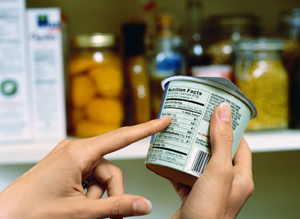Kidney Disease: Eating Less Sodium
Kidney Disease: Eating Less Sodium
Sodium is a mineral that the body needs in small amounts. Sodium is found in table salt. Most people eat far more salt than they need. There are 2main reasons for this: Salt is present in high amounts in most processed foods (pre-prepared foods like breakfast cereals, cookies, and pickles) and in all restaurant foods. In other words, if you are not cooking from fresh ingredients at home, you are very likely eating more salt than you need. When sodium intake is too high, it can increase thirst and cause the body to retain fluid. To avoid these side effects, people with chronic kidney disease are often told to eat less sodium. The tips on this sheet can show you how.
People with chronic kidney disease should restrict their salt intake to less than 1,500 milligrams (mg) of sodium daily. Food labels generally report the sodium content. Table salt is sodium chloride. One level teaspoon of table salt contains 2.300 mg of sodium.
When you shop for food
Unlike canned and processed foods, fresh foods have no added salt and are better for you. When you’re food shopping:
Choose fresh foods when you can.
Read food labels before buying packaged foods. Check the label’s nutrition facts for sodium amounts and servings per package.
Try to pick packaged foods with a sodium content of 140 mg (milligrams) or less per serving.
Do not choose foods with over 400 mg of sodium per serving.
Season instead of salt
Try the seasonings and foods listed below to season without sodium.
Basil: tomatoes, squash, eggplant, soups, fish
Curry: soups, rice, lentils, chicken
Dill: beets, cucumbers, green beans
Garlic: sauces, vegetables, meats, fish
Ginger: carrots, chicken, cooked fruit, white sauces
Lemon: asparagus, artichokes, broccoli, spinach, fish
Mint: cold soups, salads, fruit dishes
Oregano: eggplant, chicken, salads, sauces
Thyme: chicken, fish, lean meats, soups, stews
Food that has salt added during cooking tastes less salty than if salt is sprinkled on it at the table. Therefore, use half the amount of salt you want to have in your food during cooking, and sprinkle the other half on the food at the table.
Do not use seasoned salt or salt substitutes. They may contain sodium or potassium (another mineral people with kidney disease are often told to limit).
Updated:
January 10, 2018
Reviewed By:
Latif, Walead, DO,Walton-Ziegler, Olivia, MS, PA-C
